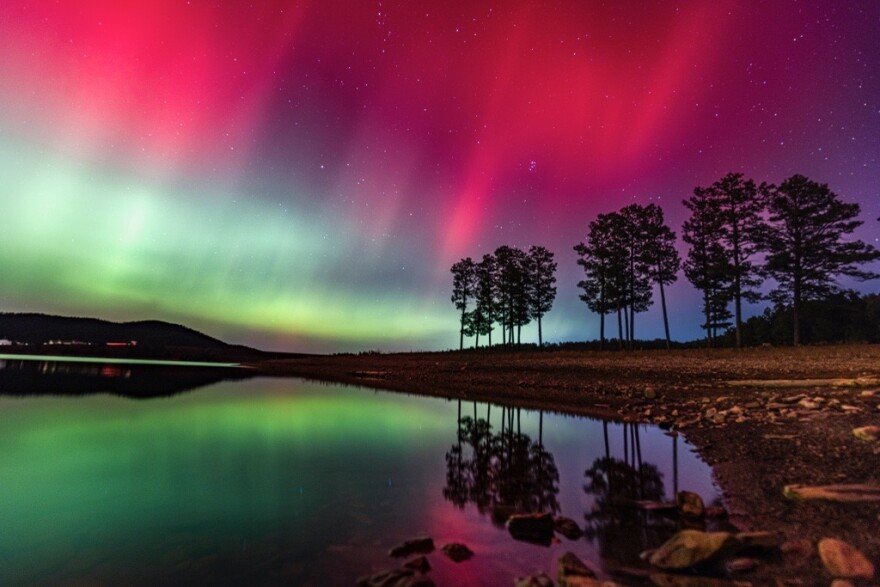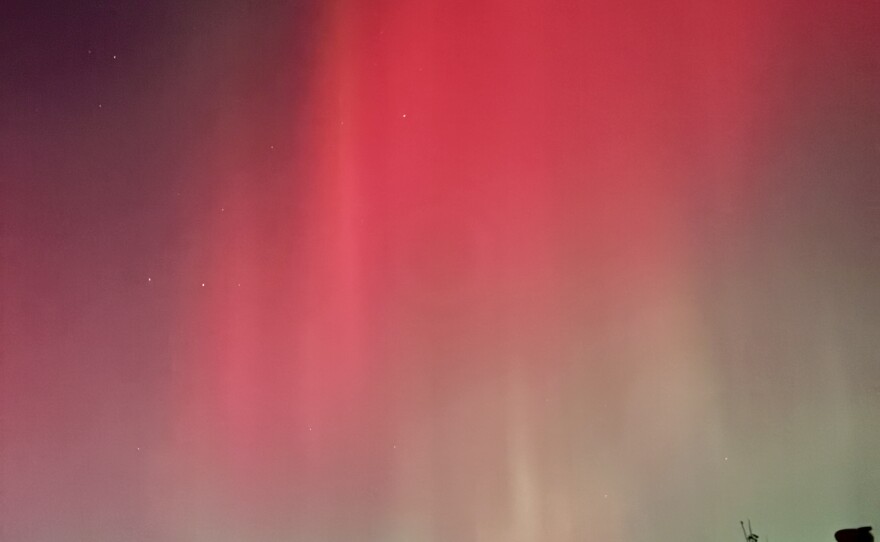South Dakotans were treated to a colorful display of the northern lights on Tuesday evening, and the show might not be over yet.
The Space Weather Prediction Center says the aurora could be visible over much of the northern half of the country on Wednesday.
The elevated geomagnetic activity causing the aurora this week is the result of coronal mass ejections erupting from the sun and traveling to Earth.
"We had three coronal mass ejections leave the sun since late last week," said Mike Bettwy, operations chief with the Space Weather Prediction Center, in an email. "The third and final one is expected to impact our atmosphere later today and tonight. It is difficult to predict with a high degree of certainty or precision, but it is possible this will be as impactful as last night's event."
Bettwy says there were reports of the aurora as far south as Tampa, FL overnight. Skygazers from the across the state shared photos from Tuesday evening on social media.
While the aurora borealis was moderately visible to the naked eye, it can appear especially vibrant through photography thanks to the light sensitivity of cameras. To capture your own brightly-colored shot of the northern lights, find a skygazing spot with low light pollution and take a photo of the northern sky with your phone's flash turned off. Try to hold the phone as still as possible to avoid motion blur while the camera captures a long exposure image.
Although not unprecedented, it's quite unusual for the aurora to be visible at latitudes as low as the southern states, probably only occurring once or twice per solar cycle. A solar cycle happens approximately every 11 years and is when the sun's magnetic field completely flips.
"However, during major events, like we experienced with the G5 storm in May 2024," said Bettwy, "it can expand to such low latitudes. During that event, aurora was observed in the Florida Keys and points even farther south."
According to SWPC, the best time to view the northern lights is typically within an hour or two of midnight, or between 10 p.m. and 2 a.m. local time.




